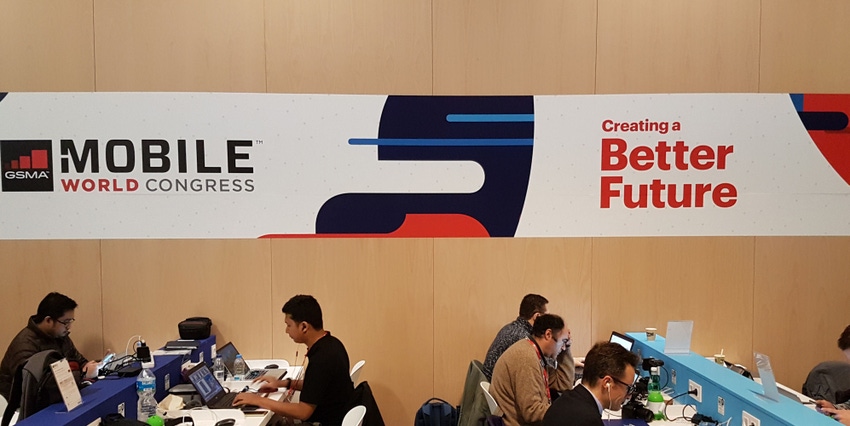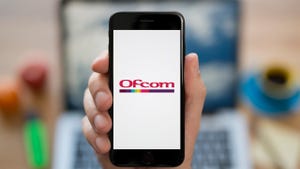Mobile World Congress can feel like a geeky take on Groundhog Day – different year, same 5G hyperbole – but we need to get better at interacting with normal people.
February 26, 2018

Mobile World Congress can feel like a geeky take on Groundhog Day – different year, same 5G hyperbole – but we need to get better at interacting with normal people.
One of the most instructive aspects of coming to this huge show year after year is the ability to take an annual snapshot of trends, attitudes and salient talking points on the show floor. Last year we got the impression that all the utopian talk of 5G, IoT, etc was at least premature and at worst actively damaging by distracting attention from the more immediate challenges and opportunities facing the telecoms industry.
This year 5G is almost upon us. The first standard freeze happened at the end of last year, which also had the symbolic effect of moving 5G from the hyperbolic to the substantial phase. By MWC 2019 we should have moved to the practical phase, with the likes of Qualcomm confident there will be 5G devices in the wild by then.
As a consequence conversations this year are evolving away from the slightly desperate blind optimism of previous years, towards a more constrained, conspiratorial assertiveness. It’s usually just a matter of time before the person you’re speaking to confides, as if they don’t want anyone else to know, that their company is poised, like a coiled snake, to pounce on the 5G opportunity and devour it.
Any maybe they are, but a fun game for sadistic journalists to play upon receipt of such top secrets is to ask for details of this commercial bounty. As often as not the emperor is then revealed to be somewhat underdressed and there is a reversion to the hypothesising, pontification and wishful-thinking of yesteryear.
This all too frequent pattern of dialogue nicely illustrates a central problem with MWC, and arguably trade shows in general; they are by definition professional echo chambers. We all get together to talk shop, do deals and, to some extent, convince ourselves that everything’s headed in the right direction and that we’re individually barking up the right tree.
But very little of this talk ever makes it into the real world – you know, that one you sometimes dip into at the weekend. What’s the point in convincing yourself and anyone who will listen to you at the show that we’re on the cusp of another mobile golden age if that message doesn’t percolate through to Joe Public?
Once it is made clear to interviewees how disinterested we are in generic hyperbole and buzzword bingo, conversations get a lot more interesting. One consistent theme is frustration at how bad operators are at marketing to consumers.
“Why is the uniform way of appealing to consumers only through coverage and price?” asked one industry veteran, on the condition that we didn’t reveal the source of this MWC heresy. “If you talk to a brand manager at any other consumer goods or services industry they talk about the need to build a relationship with the consumer. The need to understand the lifetime value of that relationship and how they work towards ensuring that relationship maintains a constantly perceived value exchange that the consumer recognizes.
“But when compared to operators globally, most interaction the consumer has outside of the bill is the ads, which are obsessed with price and coverage. We are relegating ourselves to the dumb pipe because we can’t connect the dots to why they should stay with us.”
This is unlikely to change when the 5G era gets fully underway. Operator marketing will most probably just shoehorn the 5G buzzword into the tried and tested speeds-and-feeds narrative that will essentially convey nothing more to the end user than “Well, it’s one better than 4G isn’t it?” That’s unlikely to convince anyone other than the most compulsive early adopters to pay the inevitable premium for 5G devices and services.
As if that narrative isn’t unconvincing enough by itself, operator marketing departments commit further acts of self-harm by oversaturating the market with crude, unrefined 5G spam. They will ram the concept of 5G down everyone’s throat so persistently that they will at the same time both cheapen and toxify the very message they’re so desperate to convey. If the industry can’t even clarify the 5G opportunity for itself, how does it expect to do so for the outside world?
This counter-productive navel-gazing also manifests itself in the indirect communication channel – PR. The emergence of the internet gave companies the bright idea that they no longer need to bother with awkward, uncontrollable journalists and either engage directly with its target audience via social media or appeal to dilettante ‘bloggers’ who are more likely to accept their messages at face value and be won-over by the cheapest bribes and concessions.
As a result PR has largely become a numbers game, with major agencies apparently devoted entirely to the accumulation of KPIs that they can stick in a spreadsheet to show their clients what a good job they’re doing. As the recipient of such a quantitative take on PR this hack is often left feeling like a faceless means to an end; little more than a contributor to a single cell in a spreadsheet entitled ‘coverage’ or attendance’.
There are exceptions, of course, and the telecoms sector has some excellent boutique PR agencies that bother to get to know their target publications and their writers. Sadly nobody seems to have the budget for the lavish press trips and associated epic drinking sessions anymore, but us hacks are mostly a low-maintenance bunch and a few pints in a pub every now and then is all you need to significantly increase the chances of us answering your emails. Surely there’s room in the marketing budget for that.
Which brings us to another paradox of modern PR. The corporate marketing budget is typically split into advertising and PR. Most media still rely on the advertising business model, which means the more you spend on PR the less you’re contributing to the survival of the very publications you’re paying these PR agencies to influence on your behalf. Extrapolate this trend to its extreme and you have a million PR agencies and no media, which is surely a bad outcome for everyone.
The internet is largely culpable for the quantification of journalism too. Back in the good old days of print much advertising was a leap of faith taken by companies as much because they were afraid it would reflect badly on them not to. They couldn’t quantify the precise effect of their marketing spend and seemed largely satisfied to have their brand and message juxtaposed with a respected media brand.
Then we started being able to measure ‘hits’, ‘click-throughs’ and ‘conversion rates’ and faith was no longer enough – we needed to provide proof and reassurance that every penny spent on marketing was yielding the desired result. So obsessed have marketing professionals become with ROI that it’s now not uncommon for them to demand actual commercial outcomes – i.e. sales – from every advertising contract.
But none of that exculpates the media itself. In our rush for clicks we have commoditised our own product by tending towards high volume, low quality reporting focusing on over-simplified narratives and lazy headline seeking. Or even worse, barely-concealed regurgitation of press releases and corporate messaging. It’s no wonder demand for proper PR is in decline and many media seem to lack the wit to see that, by dutifully passing on the corporate line, they’re removing what little incentive companies still have to promote their message through the commercial channel.
So, you see, we’re all in this together: companies, PR people and media. We have the common interest of conveying a complicated, technical message effectively to a mass market that has better things to do than contemplate the propagation properties of millimetre wave and very seldom yearns for lower latency wireless.
We have the opportunity with 5G to get it right this time and not simply repeat the tired marketing campaigns that surely retain limited effectiveness. Marketing and media need to collaborate on a longer-term strategy that lends itself to a more sophisticated narrative and establishes a more robust connection with the end user.
There are signs, in the era of fake news and social media overload, that the market has become exasperated with mendacious messaging. There are real opportunities out there for those who treat the market as a collection of sophisticated, intelligent individuals rather than a set of gullible demographics to be exploited. This publication will gladly call out and commend anyone who can demonstrate they’ve got that message.
About the Author(s)
You May Also Like








.png?width=300&auto=webp&quality=80&disable=upscale)


_1.jpg?width=300&auto=webp&quality=80&disable=upscale)


.png?width=800&auto=webp&quality=80&disable=upscale)